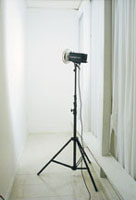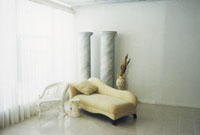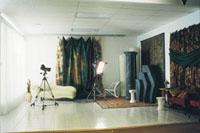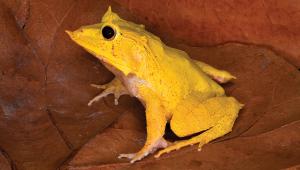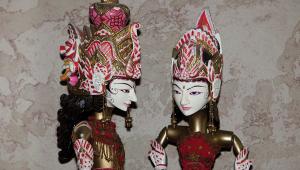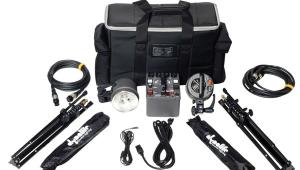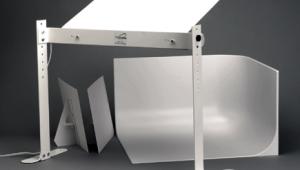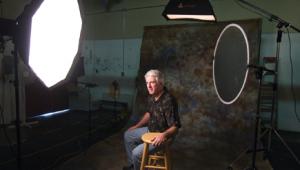Create Your Own North Light
Beautiful Daylight, 24 Hours A Day
When I look at old photos,
I mean circa 1910, not my high school yearbook, I marvel at how beautiful
they are. Those old time photographers had things a lot tougher than
we do now, what with large format cameras, slow film speeds, and no
electronic flash. The single most outstanding quality of their photos
is the light. That's because many of the old timers used only
daylight for their light source and were quite adept at it. When properly
used, it's hard to find a more beautiful light. |
|||
Beltrami has basically created
a big "wall bounce" flash and diffused it. Simple. Let's
look at the photos as we go along to see how this has been accomplished. |
|||
Photo 3 shows the entire width
of the studio. There are times when you may want to control the light
more precisely than the window light, especially when gelling lights on
the background. If your studio is big enough to allow you the luxury to
do it, you may want to have separate shooting areas. Note also the white
floors and how no fill or reflector is used for the window light setup. |
- Log in or register to post comments
